Helios-44 58mm f2 Lens Review — Soviet Bunker
Do I even need to write a review about this lens? It could be one of the most mass produced lenses in the world. It's often recommended as the first lens for photographers interested in classic lenses. There are a magnitude of reviews about this lens already floating around the bits and bytes ( there are, in fact, 8 bits in a byte ). Then again, one more review won't hurt anyone.
About The Lens
Helios-44 was produced in the Soviet Union for a very long time. There are several versions of it in existence. They were made in many different mounts. Majority of lenses were made in M42 thread mount but there are also versions for: M39 ( with SLR flange distance ); Zenit Start; K-Mount. I would keep it simple and stick with the M42 versions as they are the most available and the most affordable. They will also be the easiest to adapt to various other lens mounts.

Front of the Helios-44-2.
Optical formula, aperture blade count and other functionality is variable between the different versions but the differences won't significantly impact the performance or ease of use. I have my preferences but for the most part it doesn't matter which lens version is used. Later versions are said to have more resolving power but in practice early versions seem to be better.
Helios-44, as many other soviet items, is not an original design. It's based on Carl Zeiss Biotar 58mm f2 lens. If you have a chance to get a Biotar - do it. The optical rendering will be close to earlier Helios-44 versions. Later Helios-44 versions have a more "normal" rendering although the core characteristics are still there.
As is true for most soviet camera gear ( and also non-camera ), there can be a huge sample variation in play. If you get a copy that you think performs badly, try a different one. There is a wild mix between good and bad copies.
I have two copies of Helios-44. The first one is a Helios-44M-5. I got it a very long time ago together with Zenit 130. It's a black, plastic lens that will allow the camera to automatically stop the lens down as you're taking a photo. At least as long as the camera supports it. The second lens is a Helios-44-2. It's an older lens that is all metal and has a preset aperture design. That means that there is no automation. You have a ring that will allow you to switch between wide open and your chosen aperture with one smooth motion.
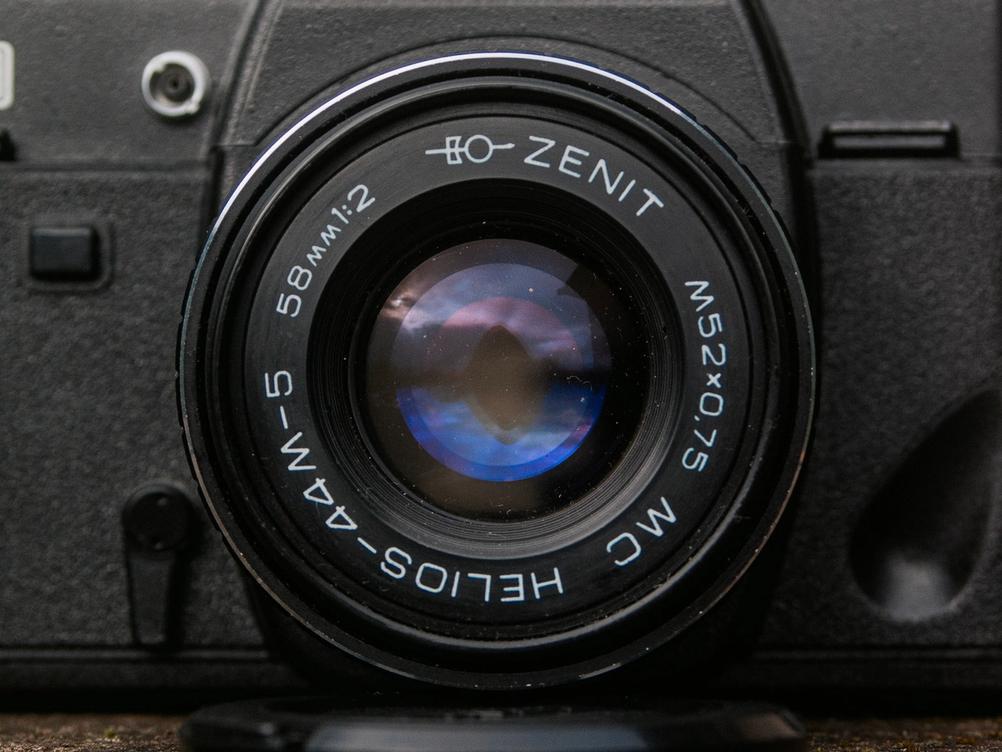
Front of Helios-44M-5.
Unless you live in a former Soviet Union country, you can expect to pay around $50 for this lens. Some versions or sellers that have confirmed that the lens is not terrible might cost more. If you live in a former Soviet Union country then you might find this lens given away as paper-weight.
Feel And Use
The build quality is quite shoddy. It doesn't matter if the lens is made from metal or plastic. You can expect some play between the various parts of the lens. That's normal. The screws used to hold together the lens are also lacking in strength. They can come loose which will enhance the wobbliness. If you attempt to screw those lenses - be careful. They are weak and can break if you look at them the wrong way.
I definitely prefer the older, metal versions like the Helios-44-2. The metal feels nicer in the hands than the rough plastic.
Focussing action is quite smooth and pleasant. I'm sure there are copies where this is not true but that shouldn't be the norm. Focusing ring turns with a nice resistance and, if you ignore the movements in other dimensions, actually feels nice.
Aperture clicks are definite, with a good click in them. The "more normal" Helios-44M-5 has a regular aperture ring and has the best "clicks". Helios-44-2, with the preset aperture, has more dampened and less defined "clicks". The actual ring to open / close the aperture is very light in action and feels good in use. Preset lenses can seem weird in the beginning. If you're wondering why such a design exists then it's to allow for focussing / framing with wide open aperture. That will let the most light in the viewfinder making it brighter and easier to see through. When you're ready to take the photo you can quickly rotate this ring which will close the aperture down to your "preset" setting. Hence the name. This is what people in the olden days did. Before cameras added automation that could do this action for you. I also have to plug rangefinders where this is never an issue because you never look through the lens.
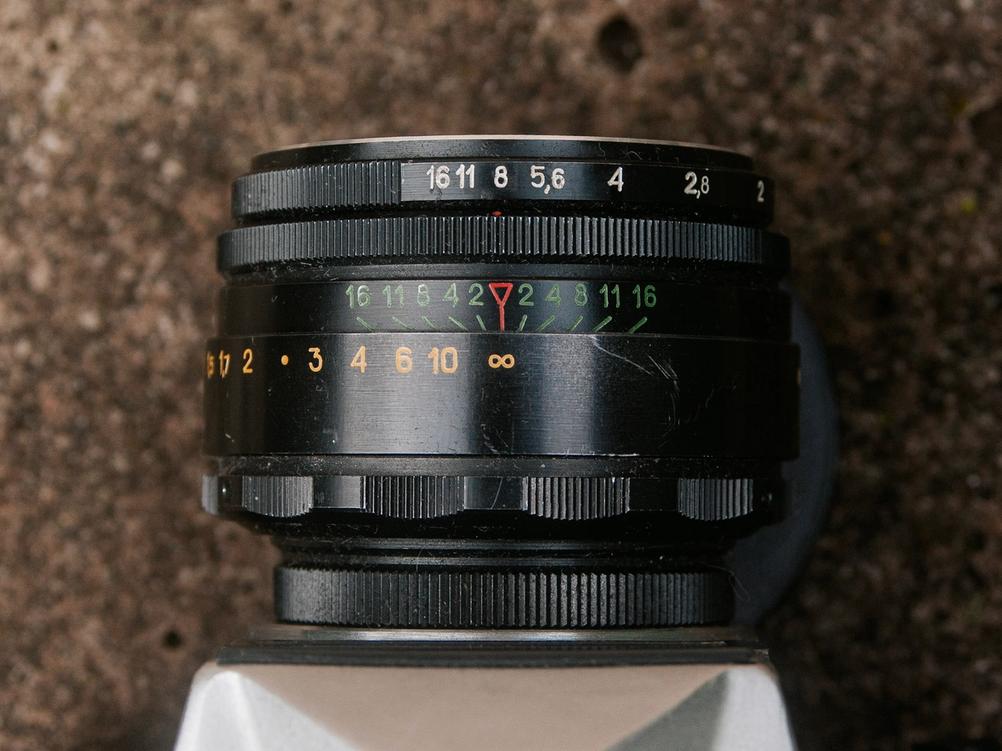
This is the "preset" Helios-44-2. You can see two rings next to aperture markings. The ring with the actual aperture values is the aperture ring. The ring further away from the front element is to actually open and close the aperture.
The red dot is against f8 in the picture but the aperture itself is actually fully open. To close the aperture down to f8 you need to turn the ring to f2 marking at which point the aperture will be closed down.
Unusual system but once you get used to it it's not too bad.

Helios-44M-5 has a normal aperture ring. Changing the aperture setting won't actually close the aperture. You also need to move a lever at the base of the lens. Camera will do it for you as long as it supports this functionality.
If you're using this camera on a mirrorless digital camera then using the "preset ring" as the only aperture control is easiest. It will mean that the aperture setting is clickless but you won't have to mess with multiple rings.
Even with the "preset" weirdness, I would still recommend going for these versions. Later versions that support automation require a lever to be moved to close the aperture before taking a photo. Depending on the adapter and camera you use - this might not work. There are hacks around this but an older version will work everywhere.
All together the lens feels OK in use. The movements between all the lens elements are annoying but it doesn't take away from the experience too much. Later plastic versions feel worse to my hands but you might not care so much about the material. Plastic lenses will also be lighter which is a bonus for some and a travesty for others.
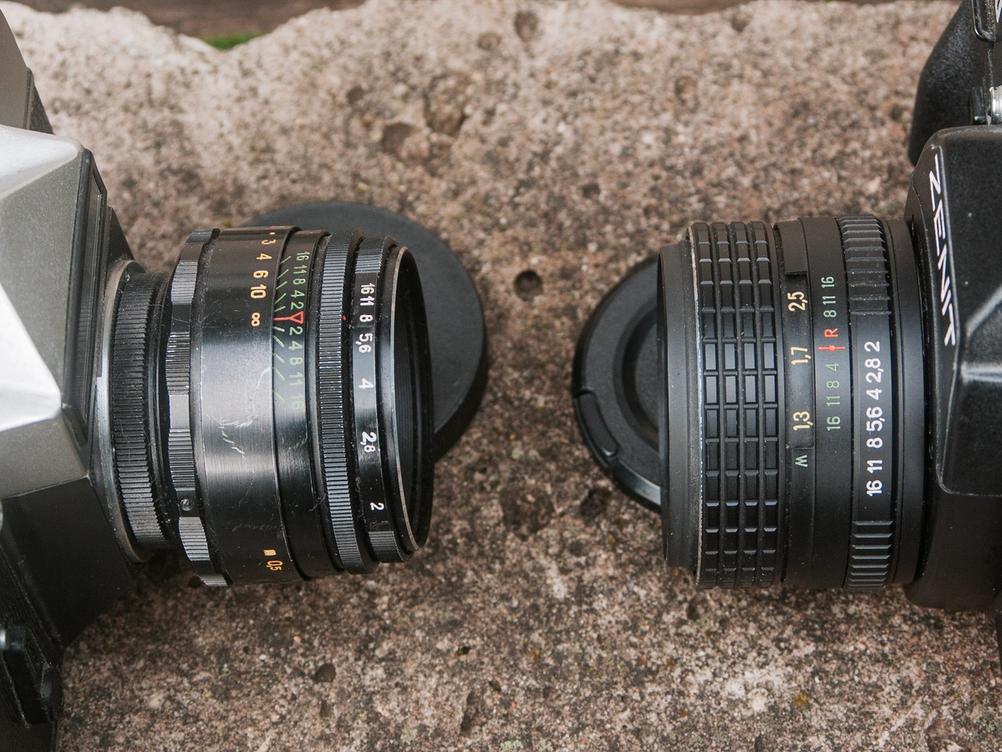
Helios-44 versions can look quite different. Metal is better than plastic though.
Image Quality
The main reason why Helios-44 is recommended as a good entry into "classic lenses" is that it delivers results that are not achievable with modern lenses. People interested in "classic lenses" want something unique. Something that has a rendering different from what is output by modern lenses.
Bokeh And Subject Separation
The main attraction for Helios-44 is the out of focus area. Otherwise known as BOKEH! Helios-44 will swirl the BOKEH when getting closer to the corners. In certain situations it will look like the in-focus subject of the photo is in a sort-of tunnel.
Corners won't swirl in any old photo. There are certain requirements that have to be fulfilled to summon the mythical creature that is the swirly BOKEH.
- Be close to wide open. f2 and f2.8 seem to work the best.
- In-focus subject has to be near. Not a full face portrait distance but more like half a person portrait.
- Out of focus area can't be too far away. Around 5 - 10 meters is a sweet spot but it can be further away too.
- Specs of light should exist somewhere in the BOKEH. It will give a more pronounced effect. Think light coming through leaves and branches.
Tick all these boxes and you can swirl in the BOKEH ocean. You should also experiment and don't take these points as the four commandments. Best things will come out of experimentation.
You should also know that the swirl will look the best when using a full frame camera. Be it analog or digital. This is because the swirl happens in the corners. When using smaller imaging areas ( like APS-C digital sensors ) they will be cropped out. You can still achieve some swirl but it will be a lot more difficult.
Speaking of digital and analog, analog will render the BOKEH in a more pleasing manner. Smoother. Digital BOKEH has sharper edges. For maximum swirl you should seek out older versions of Helios-44. Later versions are more corrected. Swirl is caused by a "design flaw" so a more corrected version will yield a "more precise" rendering. Which means less swirl. I can achieve swirl with both Helios-44-2 and Helios-44M-5 but it's definitely easier and more pronounced with Helios-44-2.
When stepping outside of the swirl, the BOKEH is on the smoother side but not "sonnar smooth". It means that it's not too harsh but you can see some edges in the bokeh. On film the bokeh is smoother, as expected.
Actual subject separation is OK. Especially when the subject is towards the center of the frame. The subject won't pop inside the third dimension. There could be some versions where the "pop" is more pronounced but it's not commoncase. I've seen that the Carl Zeiss Biotar has more of a "pop" but it hasn't translated to this soviet copy.
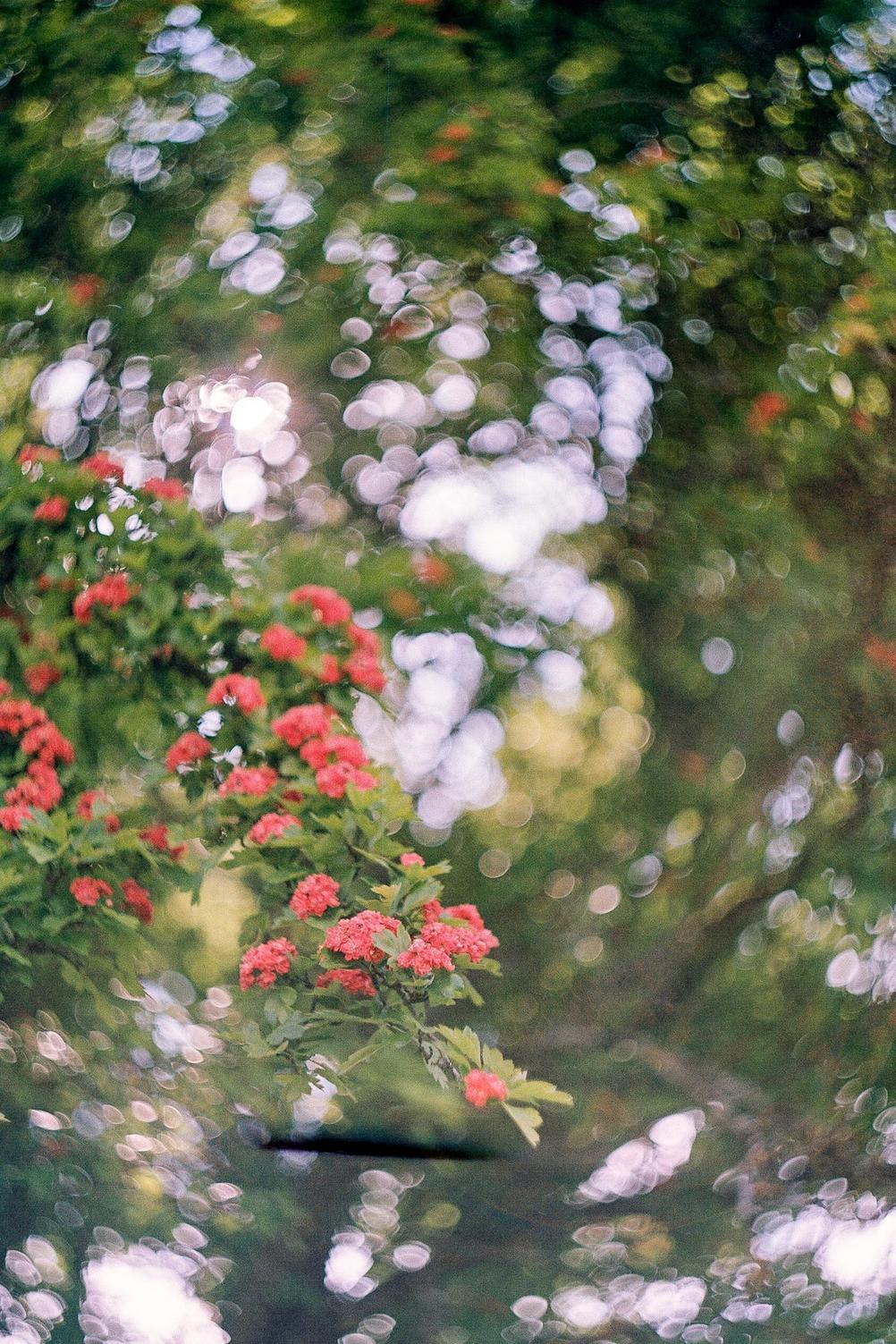
- Camera
- KMZ Zenit-E
- Lens
- Valdai Helios-44-2 58mm f2
- Film
- Kodak Vision3 50D EI50
- Development
- Tetenal Colortec C-41
- Scanner
- Reflecta ProScan 10T
Film, flowers and Helios-44 go hand in hand. Universal law dictates that you must BOKEHify everything behind a flower in a solid swirl.

- Camera
- Sony A7S
- Lens
- Valdai Helios-44-2 58mm f2
Getting the main subject too close won't help the swirl. It will only harm it.

- Camera
- Sony A7S
- Lens
- Valdai Helios-44-2 58mm f2
Even without the swirl the BOKEH is pleasant. You can see that it's not completely smooth though. There are some definite edges. Makes it look somewhat painterly.

- Camera
- KMZ Zenit-E
- Lens
- Valdai Helios-44-2 58mm f2
- Film
- Kodak Vision3 50D EI50
- Development
- Tetenal Colortec C-41
- Scanner
- Reflecta ProScan 10T
Bokeh on film is smoother. It's a common thing and not something unique with Helios-44.
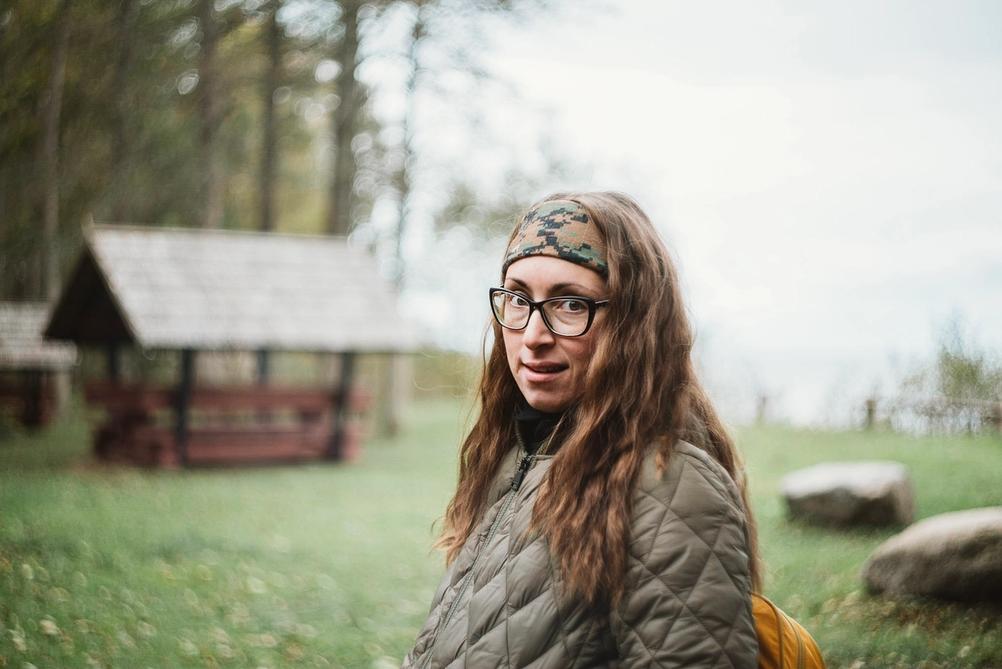
- Camera
- Sony A7S
- Lens
- Valdai Helios-44M-5 58mm f2
Full blown swirls are slightly harder to achieve with Helios-44M-5. They just don't have the same spin most of the time.
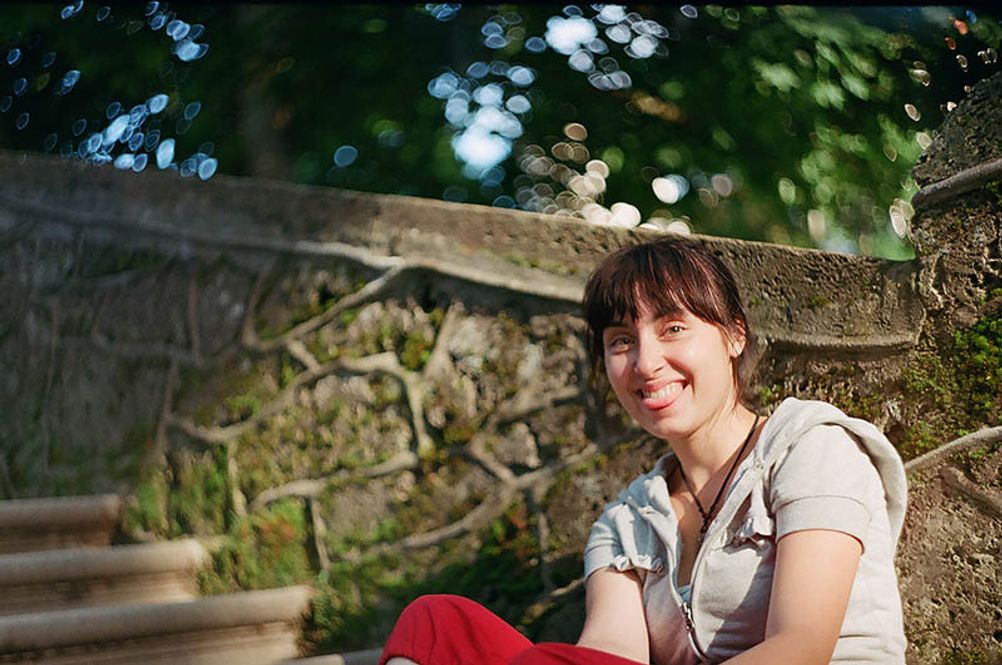
- Camera
- BeLomo Zenit 130
- Lens
- Valdai Helios-44M-5 58mm f2
But it's not impossible to swirl with Helios-44M-5. And when it swirls it can look amazing like in this ancient photo.
Enough about BOKEH. Let's write about something else.
Sharpness
This is not the sharpest lens in the world. The wild sample variation definitely brings the average sharpness down but don't expect razors even from the best copy. That is not to say that the lens is soft. In the center it's sharp. It's when moving towards the edges and corners is where issues creep in.
f2 - f4 will have significant "smudging" in the corners and edges. This is more visible on digital but it doesn't fully escape analog as well. After f4 things start to improve but there will never be a sharp frame from one corner to other. Even at f8. For that reason I can't recommend this lens for landscape or architecture type photography. Or any photography that requires everything to be evenly sharp. Obviously you can take a unique twist for any genre so don't take this as an absolute.
This lens performs best when the subject is towards the center of the frame. Subject will be sharp and everything else will be in BOKEH. The bad corners and edges will improve the out of focus areas.
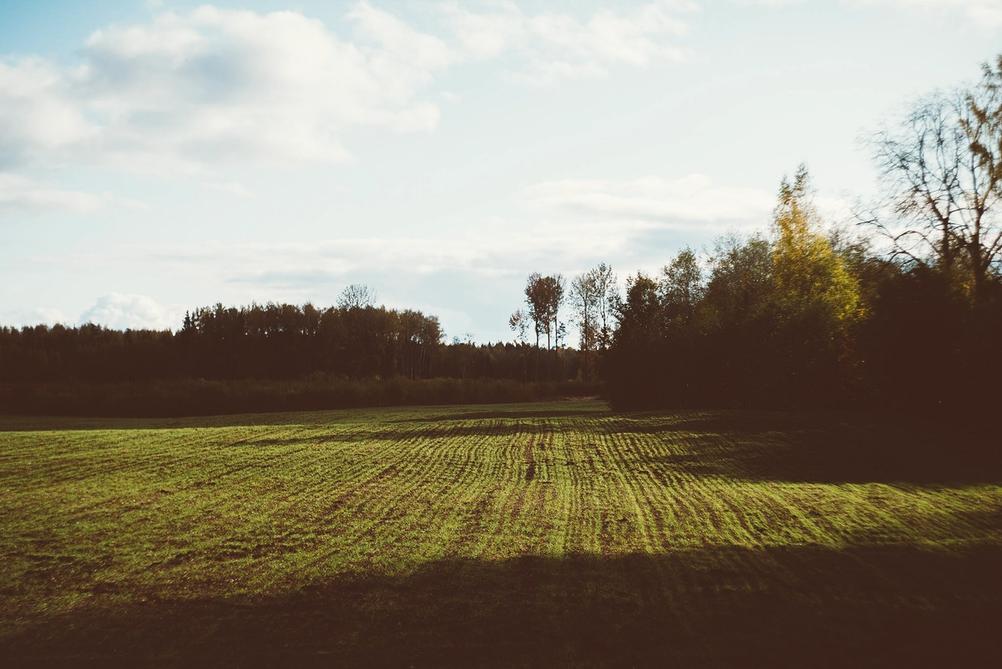
- Camera
- Sony A7S
- Lens
- Valdai Helios-44-2 58mm f2
This was taken around f8 and you can see that the corners and sides are nowhere near the sharpness of center. This could be enhanced by sample variation but I haven't seen many photos taken with Helios-44 that are sharp across the frame.
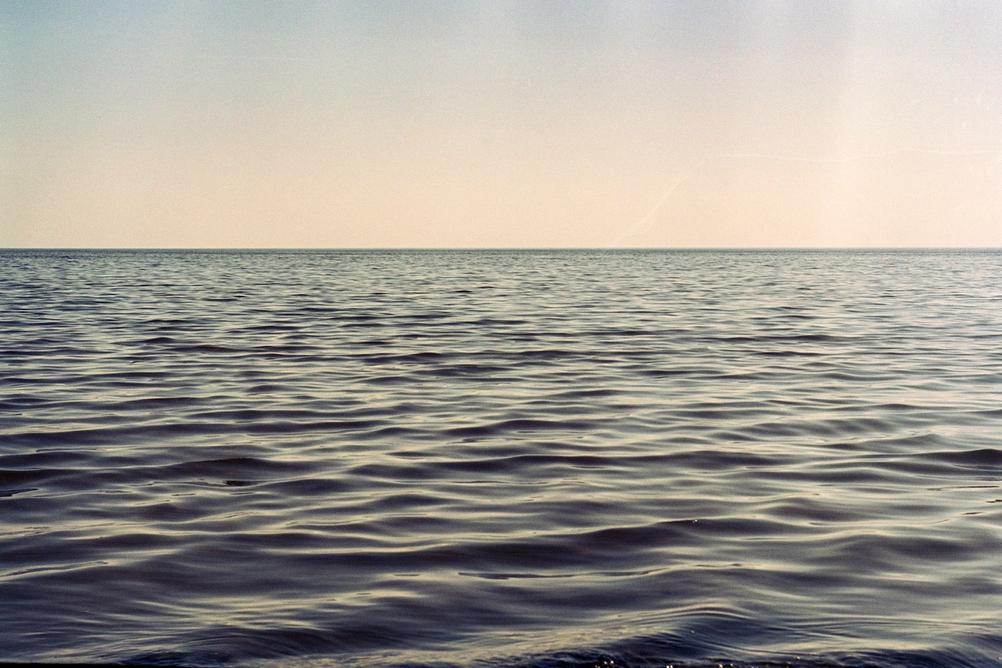
- Camera
- KMZ Zenit-E
- Lens
- Valdai Helios-44-2 58mm f2
- Film
- Kodak Vision3 50D EI50
- Development
- Tetenal Colortec C-41
- Scanner
- Reflecta ProScan 10T
This isn't the best photo to showcase the sharpness from edge to edge but you can see that it's better on film than on digital.

- Camera
- Sony A7S
- Lens
- Valdai Helios-44-2 58mm f2
Subjects in the center can't complain about sharpness. The center is sharp enough for most needs.
Contrast And Colors
Everything else about this lens rendering can be categorised under "medium" or "average". Contrast is not strong but it also doesn't look like the lens is full of fungus or haze. Saturation is on the weaker side but it doesn't have a "washed out" look. Colors themselves are on the warmer side but not by much.
If you're planning to use this lens on a digital camera then none of this matters. You can edit the photos to your liking. On analog it matters a bit more but it doesn't have to. You can edit analog photos as well. If you're scanning them then it's very similar to pure digital photo editing. If you're printing in a darkroom then you have plenty of physical means to adjust the look of your photos.

- Camera
- Sony A7S
- Lens
- Valdai Helios-44-2 58mm f2
Flare is handled very well in most cases. You can see where the sun is in this photo and there is no flare and contrast loss is very minimal.
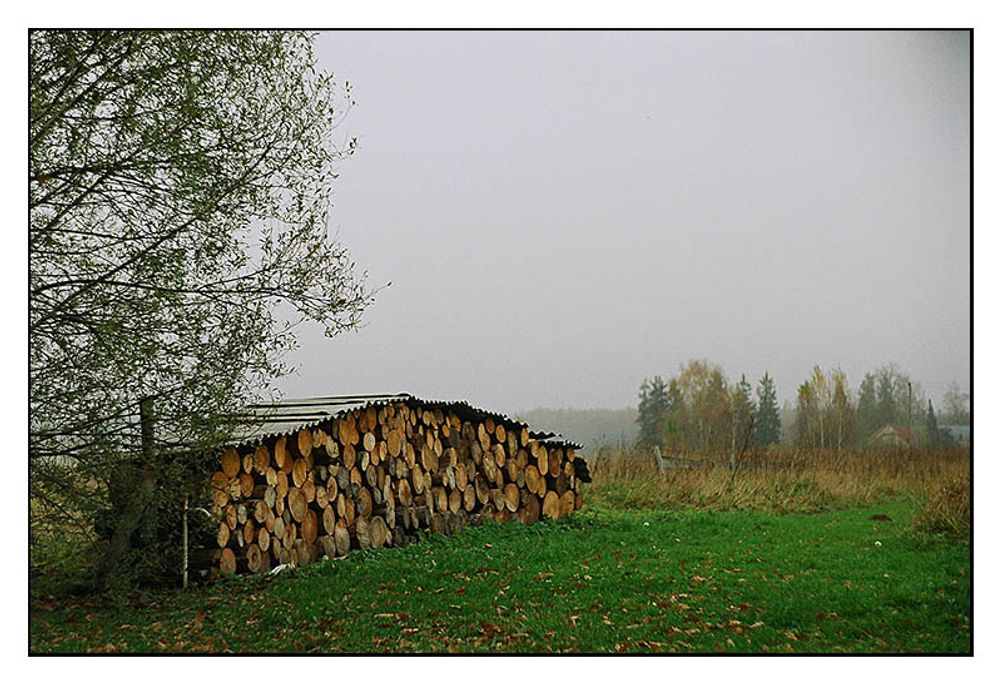
- Camera
- BeLomo Zenit 130
- Lens
- Valdai Helios-44M-5 58mm f2
Contrast, colors and everything in between can be adjusted to ones liking. Even analog.
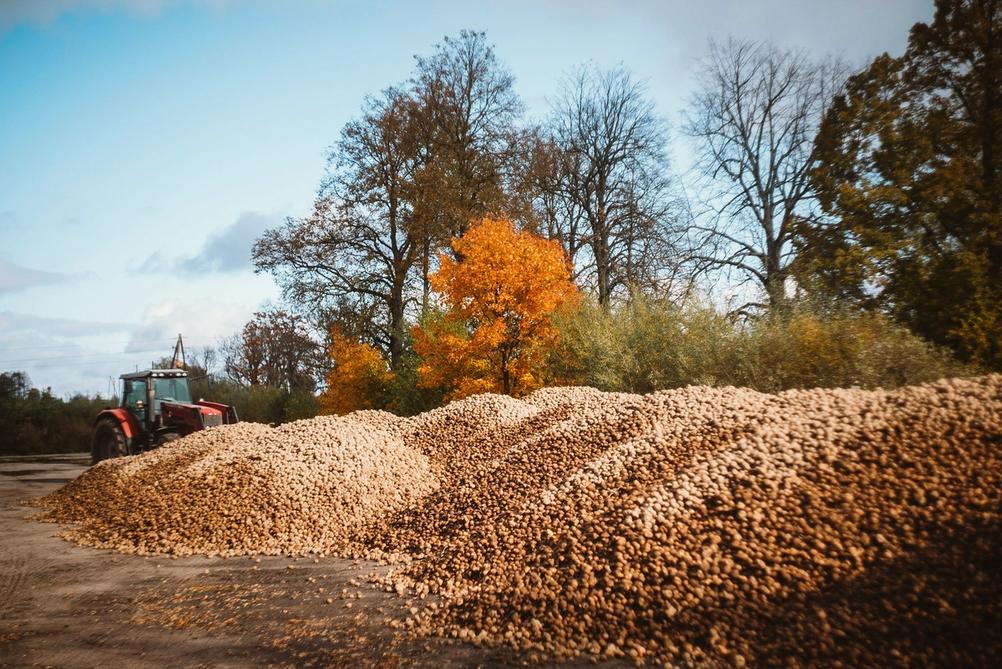
- Camera
- Sony A7S
- Lens
- Valdai Helios-44-2 58mm f2
On digital you can edit the photos. Make the potatoes look like the potatoes you wish you had on your plate. I wish I had potatoes.
Final Thoughts
I agree with the sentiment that Helios-44 is a good lens to venture into "classical lens photography". It will deliver results that are not possible with most modern lenses. My only worry is that some people might think that this lens is representative of all classical lenses. That's far from the truth. Classical lenses don't mean wobbly build quality. Classical lenses don't mean automatic swirly bokeh. Classical lenses don't mean that sample variation is insane. If you understand that then Helios-44 is a great lens.
As one will get tired of the "one trick pony" that is the swirly BOKEH, I hope that this person will look into more classic lenses. There are some amazing options out there. Not everything will be as cheap as Helios-44 but the world is vast. Go and explore.
I, myself, like to use this lens from time to time. I do enjoy the occasional swirly BOKEH. My preference is also heavily for older Helios-44 versions. I prefer metal builds and later versions suffer more in the quality department. Whilst I hope someday to get an OG Biotar, Helios-44 serves me well.
